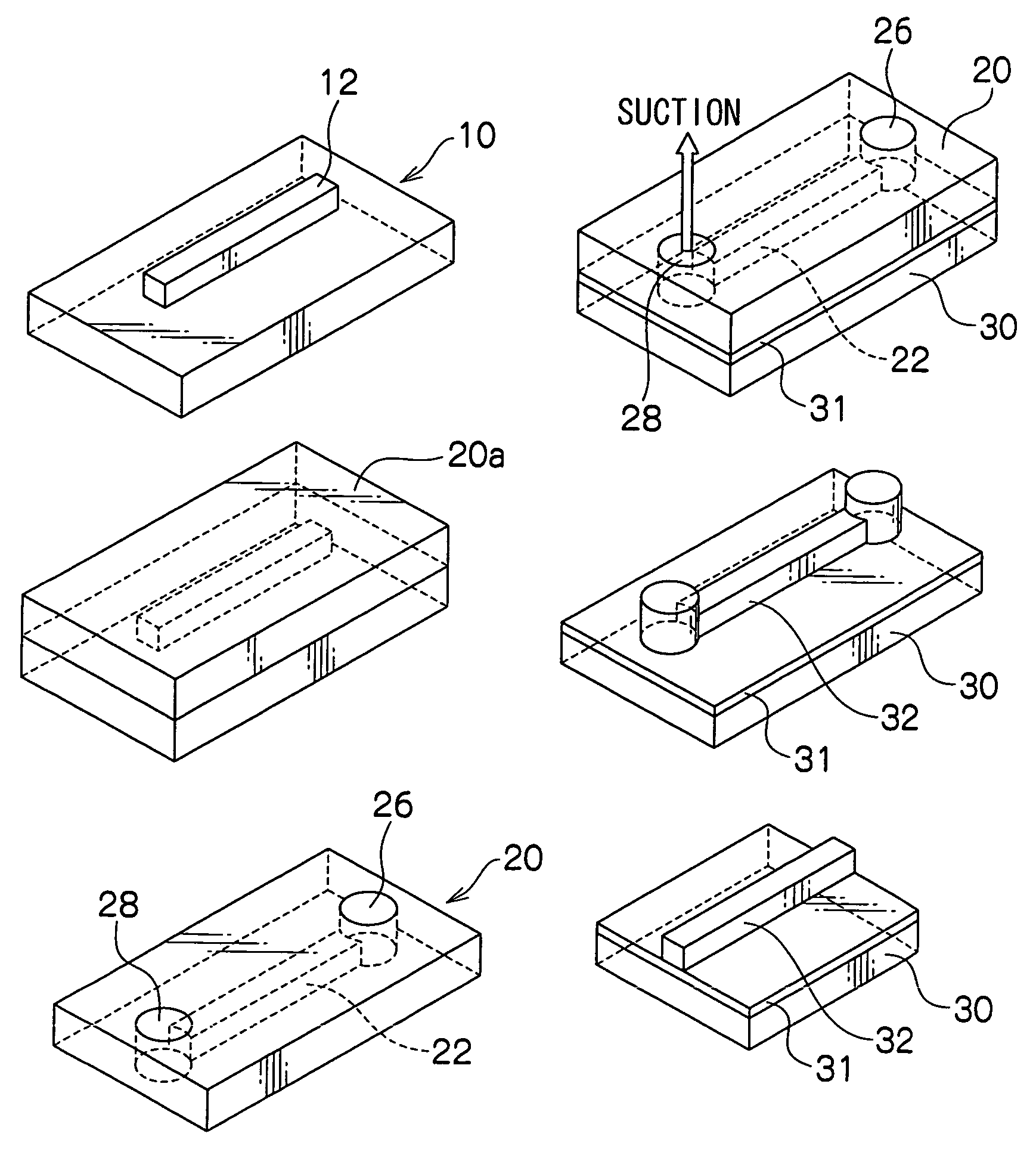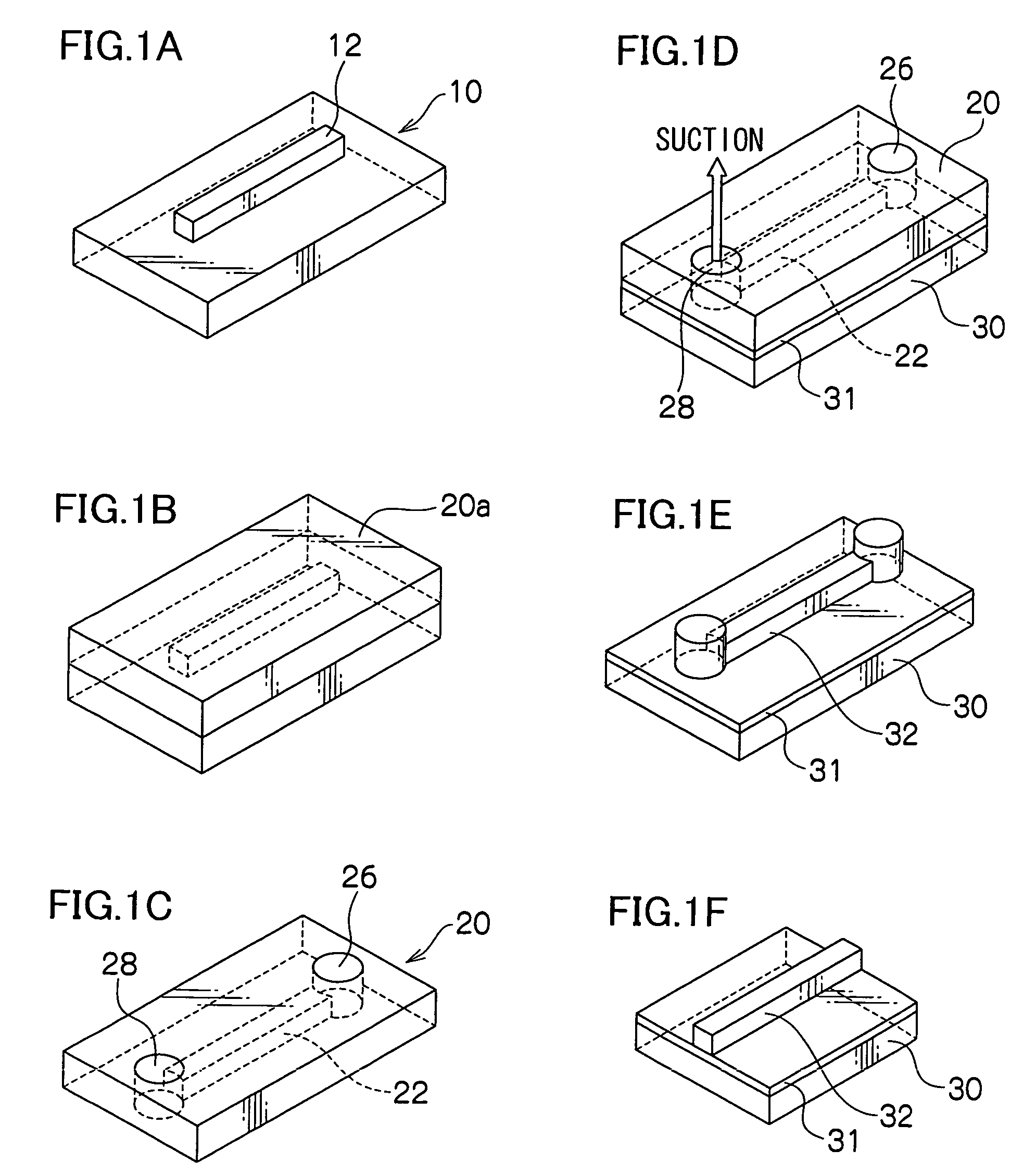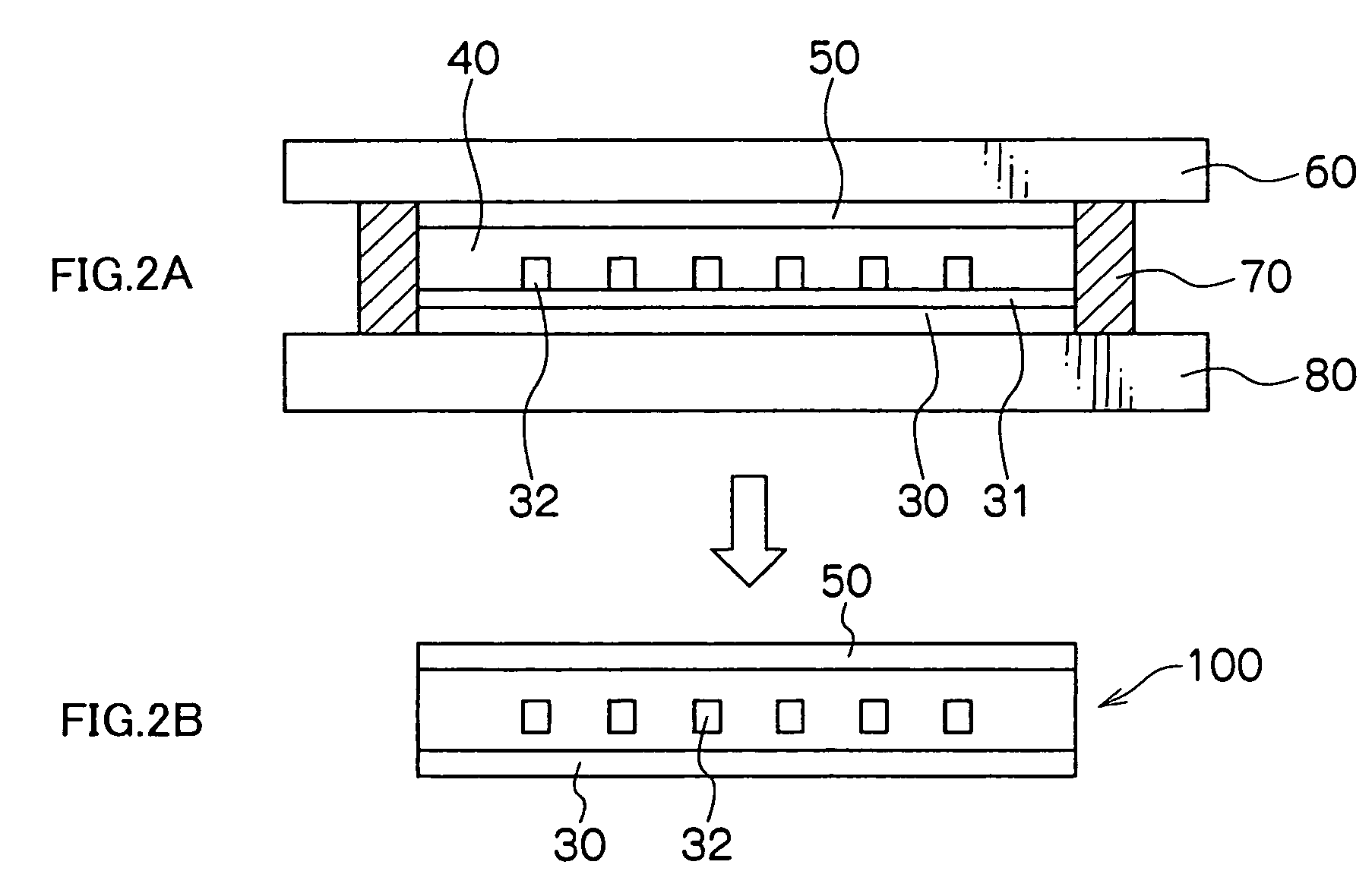Method of producing polymer optical waveguide
a technology of optical waveguides and polymers, applied in the field of producing polymer optical waveguides, can solve the problems of affecting the accuracy of a core diameter, the application of films, and the cost of methods (2) and (3), and achieve the effects of preventing the mingling of air cells, reducing costs, and easy formation
- Summary
- Abstract
- Description
- Claims
- Application Information
AI Technical Summary
Benefits of technology
Problems solved by technology
Method used
Image
Examples
example 1
[0118]A thick film resist (SU-8, manufactured by MicroChem Corp.) is applied to a silicon (Si) substrate by a spin coating method, prebaked at 80° C., exposed to light through a photomask and developed to form 8 convex portions each having a square section (width: 50 μm, height: 50 μm and length: 80 mm). Intervals between the convex portions are designed to be 250 μm. Next, the substrate is post-baked at 120° C. to manufacture a master plate for manufacturing a polymer optical waveguide.
[0119]Next, a releasing agent is applied to the master plate, into which a mixture of a thermosetting liquid dimethylsiloxane rubber (SYLGARD 184, manufactured by Dow Coning Asia, viscosity: 5000 mPa·s) and a curing agent are introduced and heated at 120° C. for 30 minutes and then cured. The cured layer is then peeled off to manufacture a mold (thickness of the mold: 5 mm) having a concave portion and corresponding to the aforementioned rectangular convex portion.
[0120]Moreover, through-holes each h...
example 2
[0128]A flexible polymer optical waveguide is manufactured in the same manner as in Example 1 except insofar that a polyether ether ketone (PEEK) film is used in place of the PES film.
[0129]The propagation loss of the polymer waveguide thus obtained is 0.06 dB / cm.
example 3
[0130]A flexible polymer optical waveguide is manufactured in the same manner as in Example 1 except insofar that an Arton film is used in place of the PES film.
[0131]The propagation loss of the polymer waveguide thus obtained is 0.06 dB / cm.
PUM
| Property | Measurement | Unit |
|---|---|---|
| thickness | aaaaa | aaaaa |
| surface roughness | aaaaa | aaaaa |
| curing shrinkage factor | aaaaa | aaaaa |
Abstract
Description
Claims
Application Information
 Login to View More
Login to View More - R&D
- Intellectual Property
- Life Sciences
- Materials
- Tech Scout
- Unparalleled Data Quality
- Higher Quality Content
- 60% Fewer Hallucinations
Browse by: Latest US Patents, China's latest patents, Technical Efficacy Thesaurus, Application Domain, Technology Topic, Popular Technical Reports.
© 2025 PatSnap. All rights reserved.Legal|Privacy policy|Modern Slavery Act Transparency Statement|Sitemap|About US| Contact US: help@patsnap.com



